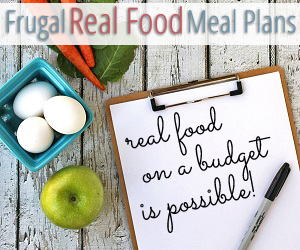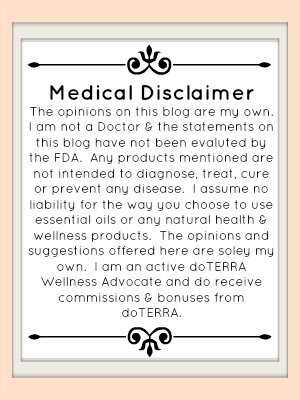Organic, organic, organic!
There are some key aspects of foods’ nutrition and healthfulness to consider when choosing healing foods – we want ones that are high in supportive nutrients and that are clear of toxic chemicals. Consuming foods as they are grown from Nature is where to begin – fresh fruits, wholesome vegetables, hearty whole grains, lively legumes, nutritious nuts and seeds, some calming low-fat dairy, and non-toxic animal proteins, from eggs to flesh if these are desired and feel right for you. Then, make sure the main foods you eat are not filled with additives or exposed to pesticides and other chemical sprays, or contaminated in other ways, such as from the water, soil, or industrial treatments.
The key foods to buy organically grown and/or manufactured from organic ingredients are:
Those that are commonly heavily treated, such as strawberries and animals;
Those where you consume the parts that are sprayed, as in leafy greens or broccoli;
Those that you consume frequently, whereby you’ll get higher accumulated exposure over time, as in apples or bananas.
The Good & The Bad!
Ideally, our entire diet could be made up of wholesome, healthy organic and clean foods.
My list for Ten Healing Foods To Buy Organically Grown includes:
Strawberries
Strawberries are red and energizing, rich in vitamin C and carotenoids (beta-carotene and others). But this fruit is the most heavily contaminated produce food in the U.S., according to data from a number of environmental groups, including a 1993 study by the Environmental Working Group (EWG of Washington, DC) and an analysis by the Pesticide Action Network of North America (PANNA). Strawberries in California are treated with more than 300 pounds of pesticides an acre, and some areas of the country use up to 500 pounds per acre. As a comparison, conventional farming currently uses about 25 pounds of pesticides an acre on the average crop. Also, some growers may be spraying the harvested strawberries for shipping. This adds to the amount of chemical concentration in the fruit. Strawberries were also found to have the highest level of hormone-affecting pesticides, including benomyl, vinclozolin, and endosulfan. Methyl bromide is another common toxic spray used on strawberries. Note that out-of-season strawberries may be even more heavily treated because they come from other countries and are sprayed before shipping.
Leafy Greens, such as Lettuces, Spinach, Kale, and Chard
These foods are considered vital and nutritious. They contain folic acid as well as calcium, iron and other minerals. However, sprayed chemicals tend to remain on the leaves of these vegetables, which is potentially more harmful since we eat those leafy parts. In FDA studies, spinach was the most frequently found leafy green to contain the more potent pesticides, especially the organophosphates (neurotoxins) and permethrin (noted as mildly carcinogenic).
Grapes
All grapes contain cleansing fibers, B-vitamins and vitamin C, plus some minerals from the soil. Red grapes contain many phytonutrients, including the healthy proanthocyanadins, which appear heart protective. Unless they are organically grown, however, grapes may receive multiple applications of a variety of chemical agents during their growing period. Many fruits, including grapes, ripen quickly and attract insects and molds. Thus, they tend to be more heavily treated in order to get them to the market (and to protect the financial interest of the grower). FDA research indicates that imported grapes are even more heavily treated than the U.S. samples. During winter and early spring, almost all grapes available in the U.S. are from Chile, and these are found to have an exceptionally high percentage of pesticide residues (79%). They also have a higher percent of the carcinogenic pesticides, captan and iprodione. However, U.S. grape growers use high amounts of sulfites and the fumigant, methyl bromide, so these are all good reasons to buy organic grapes and grape juices.
Rice
This is the most frequently consumed food on the planet. And this high-fiber, low-fat staple has many B-vitamins and minerals, including the important anti-oxidant, anti-cancer mineral, selenium. You should seriously consider buying organically grown rice and rice products, especially if it is one of your staple foods. The dangerous herbicide 2,4,5-T was sprayed on rice before being banned in 1984, and many persistent water-soluble herbicides and insecticides have been found to contaminate the ground water near major rice fields, such as in California’s Sacramento River Valley. I suggest buying organic rice in bulk. You’ll find that this way it’s as economical as non-organic pre-packaged rice and much safer.
Cruciferous Vegetables (Broccoli, Cabbage, Brussels Sprouts, and Cauliflower)
Because of their healthy anti-cancer phytonutrients, vitamin and mineral content, high-fiber and low-calories, these are excellent foods to eat regularly. But since we eat the parts that may have been sprayed with carcinogenic chemicals, it’s best to eat the organically grown versions of these vegetables.
Apples
A staple in many diets, they contain cleansing fiber, detoxifying pectin, and many nutrients. However, most apples have been found to be nearly as contaminated as strawberries. Forty eight different pesticides were detected by FDA testing in nearly 2500 samples from 1984 to 1991, while 36 different chemicals were found in their 1992 to 1993 evaluations. Nearly half of these 36 were either neurotoxic or carcinogenic chemicals. In the FDA analyses, apples and peaches were the two crops with the greatest number of different pesticides per crop–seven! Fortunately, a shift away from spraying the orchards is occurring in some areas; about 70% of the apple growers are using organic practices and integrated pest management. If you buy non-organic apples, be sure to peel them and discard the skin before you eat them since most of the chemical residues are on the apple skins. We might want to change our saying to “an organic apple a day keeps the doctor away.”
Almonds and Sunflowers Seeds
These nutrient-rich life forms of Nature contain most vitamins and minerals as well as the vital essential fatty acids (EFAs). They also can hold more pesticides and other chemicals in their oils, since many are attracted to oil more than water. They are compact essences of nutrition with many B-vitamins, minerals (even hard-to-find minerals like zinc and selenium), and healthy, tissue-feeding essential oils. It is wise for humans to consume the freshest low-salt samples of these “mini-vitamins.” Add to this list some pumpkin seeds, walnuts, pine nuts, and sesame seeds.
Tomatoes & Sweet Peppers
These “fruits of the vine” are full of healthy nutrients that include vitamin C, B-vitamins, carotenoids, and other phytonutrients, especially the prostate-helpful and tissue-supporting lycopenes. Both red and green bell peppers were found to have many pesticide residues from the most neurotoxic of the pesticides. In the FDA’s measurement of both U.S. and Mexican crops, 64% of peppers contained at least one pesticide, while 36% contained two or more. These vegetables also may be waxed which makes it difficult to remove the residues and other chemicals within the waxes. One study found that as many as 30 different pesticides are used to spray tomatoes. Because the skins of tomatoes are thin and absorbent, and since this is a staple in many salads, soups and sauces, tomatoes are worth buying organically grown. At certain times of year, the price of organic plum tomatoes is competitive with non-organic varieties. And farmer’s markets may be the best source of all for fresh unsprayed tomatoes, or better yet, grow your own.
A couple other classes of fruits and vegetables that are healthy for us are also best looked for and consumed from organic growing and shipping practices include:
Tropical Fruits
Although wonderfully tasty and high in carotenes and continuing many other nutrients and enzymes, pineapples, papayas and mangoes are very attractive to tropical pests and may be more heavily treated during cultivation, storage, and shipping. Because of their thin skins, they tend to absorb the sprays, creating higher levels of chemical contamination. We call these systemic pesticides, and they cannot be washed away such that they get into our systems as well.
Imported Produce
This usually out-of-season produce is often heavily treated for easier growing and shipping to the United States. There is also risk of higher toxicity from the use of chemicals that have been banned in the U.S. Cantaloupes and other imported melons were found to have a high concentration of pesticides in two thirds of tested samples. In Mexican cantaloupes, 48% had two or more residues.
Shop Locally
Ideally, it is healthiest to eat foods grown and cultivated near our area and in the season they are harvested. Seasonal eating is one of the keys to a balanced and wholesome diet. These foods are the freshest, often the most economical, and usually less treated, even non-organic, because they don’t need to be protected for shipping long distances. Eating as much as possible from Nature, the bounty of Mother Earth, is a key message for healthy nutrition.
Other Healing Foods that may or may not be available organically grown include: oily (omega-3 oils) fish like Salmon, Olives and Olive Oil, Wild Berries or Blueberries, and Garlic and Ginger.
Important note about Milk Products and Eggs; also Wheat and Corn
Because pesticides are pervasive and stored in higher amounts in the fats of food, dairy products tend to retain higher levels of residues and chemicals from feeds and other sources. This is not well researched yet; however, it makes total sense to me, and therefore my family with growing children is buying organic milk products.
Milk
Milk is a common source of the herbicide atrazine (a known endocrine-disrupter) and the growth hormone BGH which has been genetically engineered to boost milk production.
Eggs
Eggs are one of the more bio-available proteins especially for growing folks, pregnant women, and those needing a protein source, especially if you digest them well and aren’t allergic to them. They have many nutrients that feed the body tissues, the sexual glands, sperm and eggs, and hormones. However, eggs are typically produced in factory farms where the hens often live in crowded, unhygienic conditions. This may be one of the reasons that salmonella bacteria are found in eggs so frequently. More than two million eggs each year are contaminated, resulting in more than a half million cases of food poisoning. Factory farm eggs also may be lower in nutrients than organic ones, and they don’t taste as good as farm fresh eggs from the free-ranging chickens that are not fed antibiotics. Our best egg option is organic eggs, which are now becoming more available.
Wheat
Wheat is another staple in the American and world diet. It has many vitamins, minerals, and fiber. However, in a recent review of pesticide residues, 91 percent of the wheat sampled by the FDA contained pesticide residues! Wheat can be one of the most heavily treated grains, because it is stockpiled as a basic commodity and fumigated periodically to keep down pests. When it is milled, the outer coating–the bran included in whole wheat bread and cereals–is the portion that receives the most chemical treatment. The bran and germ portion of the wheat also retains the most residues. It has been suggested that some forms of so-called wheat allergy, which has been associated with learning problems and difficulty in concentrating, may actually be a neurotoxic reaction to the pesticide residues in the grain. These pesticides are by definition neurotoxins that is how they affect the insects they are intended to destroy.
Corn
Corn contains most B vitamins, especially niacin, and adds helpful fiber to the diet. A primary staple in the American diet, corn is typically heavily treated. Locally grown fresh corn tends to be treated less, so sweet corn on the cob is likely safer than corn byproducts, which may have more contamination. However, corn is still heavily treated with the herbicide atrazine and it is also typically sprayed after harvesting.
Buy Local From a Farm, Buy Organic!

























Hi my name is Jacqueline and I just wanted to drop you a quick note here instead of calling you. I discovered your 10 Healthy Foods to Buy Organic – Simply Living Simply page and noticed you could have a lot more visitors. I have found that the key to running a popular website is making sure the visitors you are getting are interested in your subject matter. There is a company that you can get targeted traffic from and they let you try the service for free for 7 days. I managed to get over 300 targeted visitors to day to my site. Visit them here: http://txsc.us/t4ut